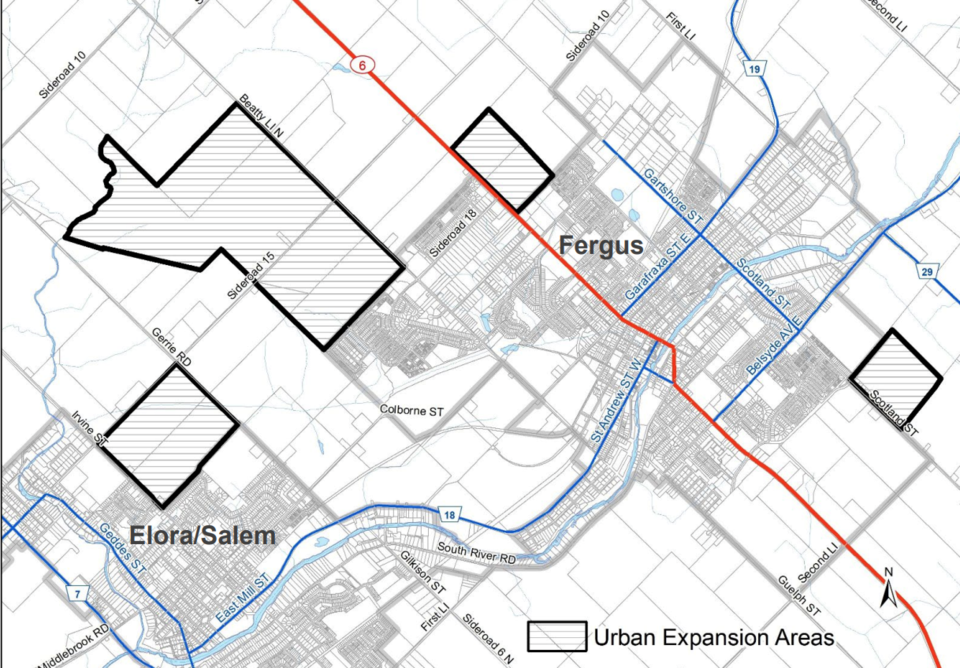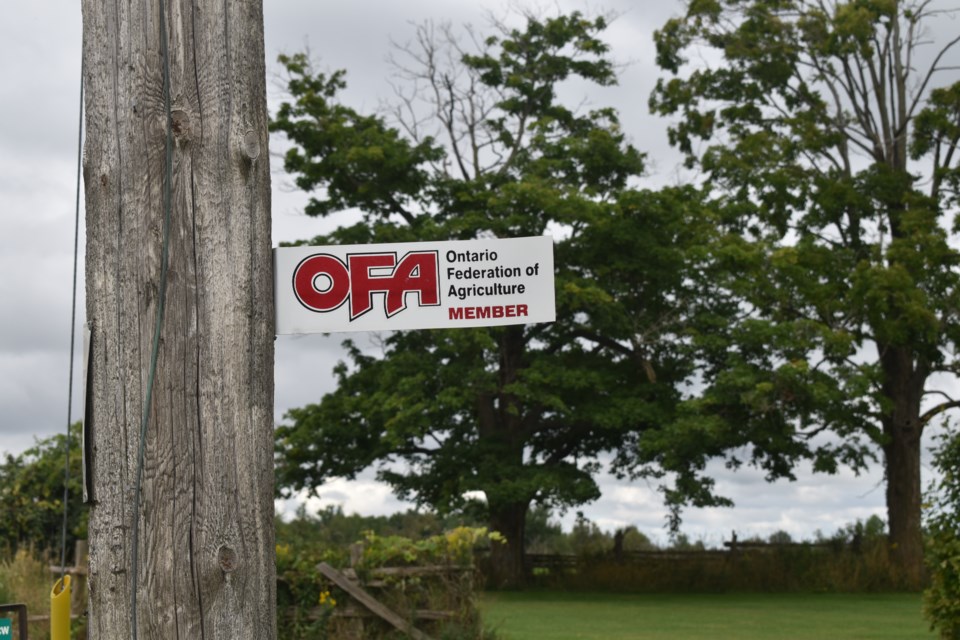EDITOR'S NOTE: This article originally appeared on EloraFergusToday, a local news site operated by Village Media.
WELLINGTON COUNTY – Local agriculture experts are concerned about the loss of farmland in Wellington County following the province’s recent move to impose an urban boundary expansion, but they fear the worse may be yet to come if other planning changes are approved.
As part of the province’s approval of the County of Wellington’s Official Plan Amendment 119, it added a modification to expand the urban boundary in some Wellington County towns.
This was not requested by the county nor were staff there consulted and it also jumped ahead of work being done by county planning staff who were evaluating the most suitable area for any expansion to accommodate growth.
Centre Wellington council had also approved hiring a consultant to see how increasing intensification in existing urban areas could reduce the need to sprawl into farmland to accommodate population growth.
 More than 1,000 acres, a vast majority of the urban expansion, is prime agricultural land around Elora and Fergus.
More than 1,000 acres, a vast majority of the urban expansion, is prime agricultural land around Elora and Fergus.
Nazaneen Baqizada, spokesperson for the Ministry of Municipal Affairs and Housing, said in an emailed statement the minister took this action to accommodate Wellington County’s significant population growth, 160,000 people by 2051, to allow for more housing to be built.
“It’s pretty devastating to have such a valuable natural resource having homes built on it,” said Janet Harrop, Fergus-area dairy farmer and Wellington Federation of Agriculture president.
This expansion might just be the beginning. Harrop pointed out proposed changes to the Provincial Planning Statement will see farmland paved over in favour of housing.
For example, the changes would allow the creation of three residential lots through severances on land zoned prime agriculture and removes the density target of 40 residents and jobs per hectare for new settlement areas or expansion lands. Harrop said she sees this as an attack on agriculture.
“This is a huge threat to primary agriculture, especially livestock agriculture,” Harrop said. “The understanding as to why they want to do this is they feel this is the quickest way to build homes but it’s going to really fragment the agricultural system, it’s going to cause conflicts between urban and rural.”
Mark Reusser, a director with the Ontario Federation of Agriculture (OFA) and Waterloo Federation of Agriculture VP, said the OFA understands the need for housing but finds the province is directing it to the wrong areas.
“We are concerned that this particular government has chosen to build on farmland rather than intensify and build complete communities within the urban boundary,” Reusser said, noting the Waterloo Region has been able to accommodate significant population and housing growth within existing boundaries.
He called the proposal to allow three homes on prime agricultural land as the most significant change to agriculture in Ontario’s land use planning in the past 100 years. With only five per cent of Ontario’s land suitable for agriculture, Reusser said this has the OFA very concerned.
“This is a war on agriculture and that’s wrong,” Reusser said. “Farmland is a non-renewable natural resource. We should be protecting it, not building on it.”
Wayne Caldwell, U of G rural planning and development professor, doesn’t find Harrop and Reusser to be overreacting.
“If this policy gets approved, we will look at it in future generations and they will shake their heads and say ‘how could we have got this so wrong?,”” Caldwell said. “It will be so challenging for agriculture in this new environment, particularly areas close to urban centres.”
He said the 1,000-acre urban boundary expansion is problematic but was particularly concerned with the proposed allowances of three residential lots through severances.
Caldwell explained historically, southern Ontario was settled on 1,000-acre concession blocks typically with 10 farms.
In theory under this policy, that block has the potential to become 30 residences which he said would be difficult for municipalities to service.
“It’s just putting a priority on residential development, on housing in the countryside that is in my view trumping agriculture,” Caldwell said.
Because of the required separation distances between residential housing and agriculture operations, he viewed this proposal as “the beginning of the end for certain kinds of livestock production” due to the conflict between rural and residential that could occur through this policy.
Overall, Harrop said this will raise the value of farmland to a point where it may be tempting for some farmers to get out of the business, especially those without a succession plan or another generation planning to take over.
“The economics of farming, the margins are such that they’re not really covering their costs. So you know for somebody like that, it’s very tempting,” Harrop said. “The idea of prime agricultural land is to grow food. It was never intended to be an economic thing, to have economic speculation attached to it.”
While the urban expansion is a done deal, the proposed Provincial Planning Statement and its changes remain under review and can be commented on until June 5.
The full provincial posting on those changes can be found here.




